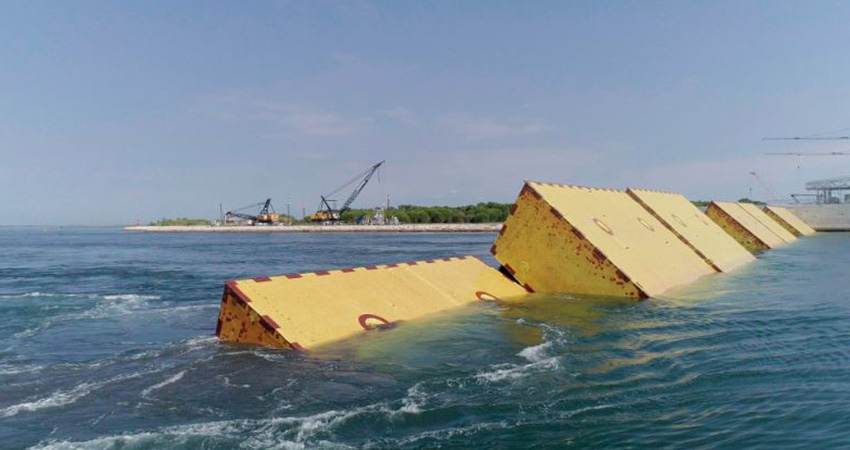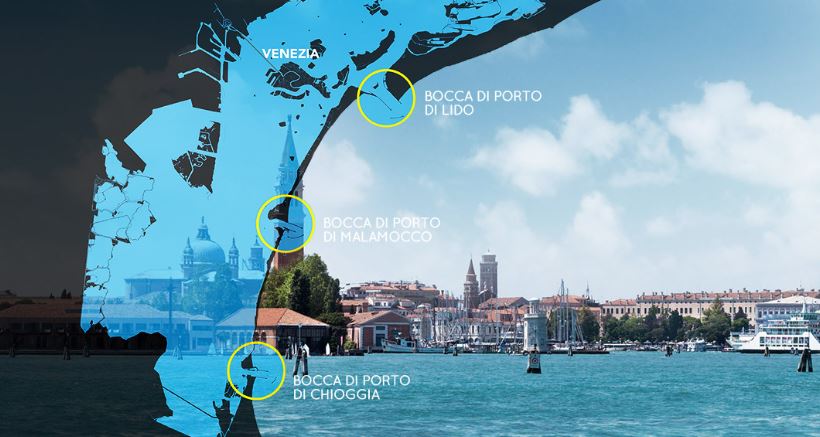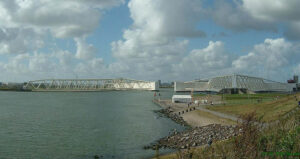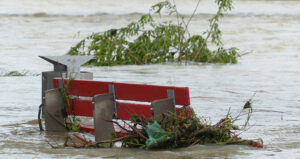More pressure on completion flood barrier MOSE in Venice

-
 Editorial Team
Editorial Team
Share article:
Tuesday 12 November Venice suffered from severe flooding’s after a tide of 187 centimetres, the worst since 1966. In theory, MOSE, the flood barrier that since 2003 is being built to protect the lagoon, could have protected Venice. But due to bad management, engineering and corruption the flood barrier is still not ready. And some people fear it will never be able to do what is was built for.

At this moment 94% of the work is finished. The estimated costs are 5.5 billion euros against an original estimate of 1.6 billion euros. At this moment all 78 mobile sluice gates are installed on the seabed in front of the three inlets of the Lagoon (Chioggia, Lido and Malamocco). When the tide exceeds 100 centimetres the sluice gates should rise through a system of compressed air. Engineers are now working on the mechanics of raising them simultaneously. If one of the gates is not functioning properly during a storm the water surge will enter the lagoon through this whole. In a worst case scenario this pressure could cause breaking the dam. Besides the mechanical tests two extra compressors and software are necessary and also a control room and staff are still missing. According to the authorities it will take at least until 2022 until the flood barrier will be operational.
Erosion and corrosion
Lately inspections and tests of the Consorcio Venezia Nuevo (CVN) have shown that many of the gates already have been eroded by salt water and mussels. The flood barrier risks structural failures also because a different steel was used than that was used during tests. Experts state that the 156 hinges that connect the gates to the concrete housing– each one weighing 36 tons are at extremely high risk of being unusable. To repair the structures which are already ruined, an additional 700 million is required, plus at least 105 million per year to guarantee function and maintenance.
Climate change
With a rising sea level and soil subsidence, high tides, known as ‘acqua alta’ in Venice will increase. The MOSE barrier was designed for protecting the lagoon for at least hundred years, but it might prove too little, too late. New climate change models predict a stronger sea rise. The sea will eventually rise to a level where even continuous closures will not be able to protect the city from flooding”, concluded a UNESCO report in 2011.
MOSE is a ghost
On Twitter mayor Luigi Brugnaro of Venice blamed climate change for the city’s troubles and called for the rapid completion of the long-delayed barrier system. “We need resources and clear ideas,” he said. “For now, MOSE is a ghost. We want to see it finished.”

















